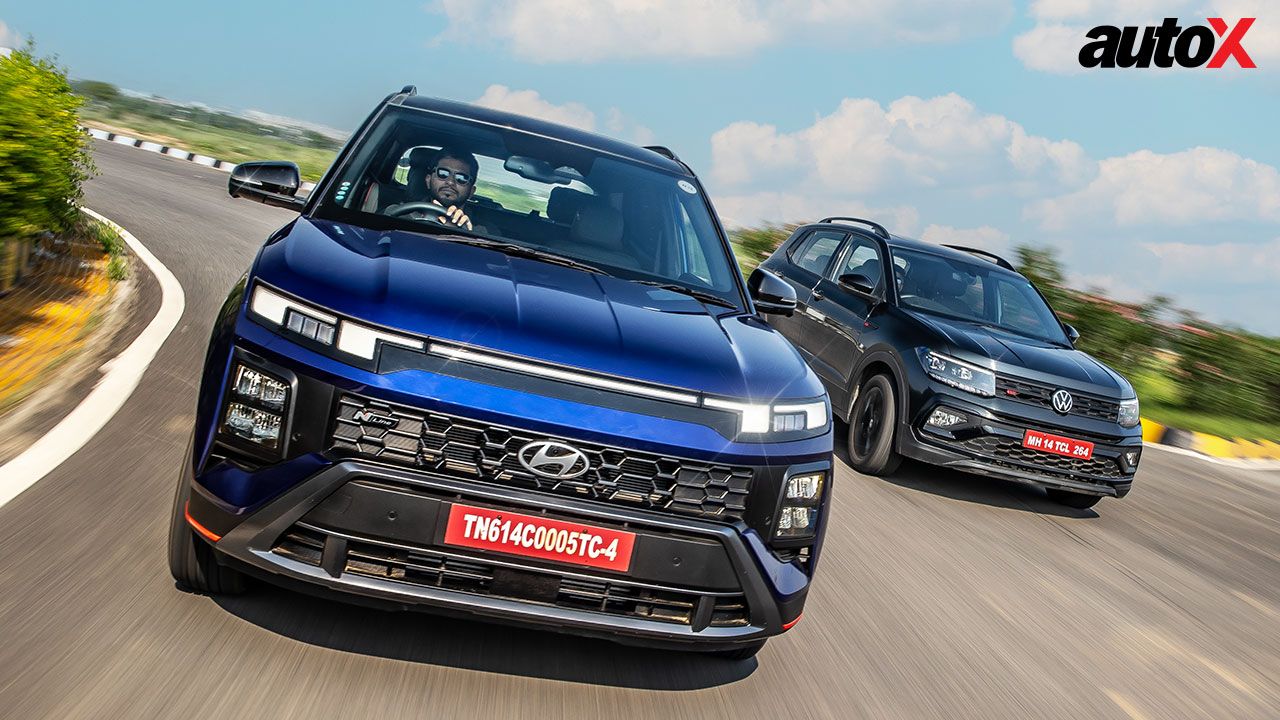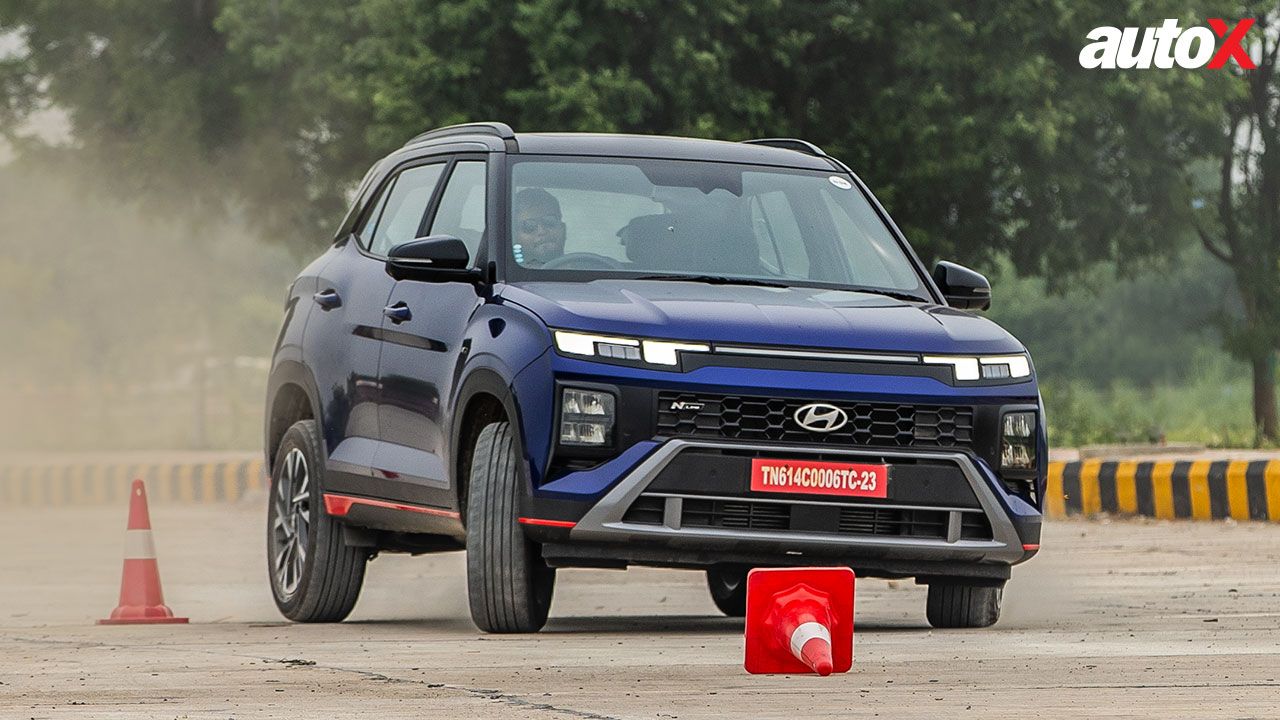
SUV stands for ‘Sport Utility Vehicle’. Now, while I am not sure which industry holds the current world record for the most absurd product abbreviation, the automobile industry, I am sure, must be a strong contender, thanks to SUV. The term is a bit of a misnomer, isn’t it? The moment you hear ‘sport’, you think of something athletic, agile, and lean. But what comes to mind when someone says SUV? Big, ungainly, and lazy – all things that are miles away from anything that has to do with ‘sport’.
But, then, we live in complicated times, and not everything under the sun makes sense. So, naturally, SUVs are the most in-demand type of vehicle in the whole wide world right now. Come to think of it, it’s perhaps the only topic that unites the world currently – weirdly amusing!
Lately, however, a lot of carmakers have been trying to justify the ‘sport’ element in their SUVs, despite the laws of physics suggesting otherwise. And it’s not just high-end luxury SUVs like the Porsche Cayenne or Lamborghini Urus; car manufacturers are making an effort to even spruce up their budget-friendly mundane family SUVs. Take the Hyundai Creta N Line, for instance. This is not the same Creta that every other uncle or aunty in your neighbourhood drives. Nope. This is a sporty Creta, aimed at enthusiasts, with a family of four. But is it any good? Well, to find out, we had no choice but to pit it against the current benchmark of the segment – the Volkswagen Taigun GT, equipped with the stellar 1.5 TSI engine.
Now, before we begin, let’s define the scope of this comparison – we’ll focus solely on the ‘sporty’ aspects of the Creta N Line and Taigun GT. In other words, we stick to just two aspects – performance and handling. So, if you are curious about which one of these offers better cooling for your bum, where your mum would be more comfortable, or which has the largest boot space, well, let me just say that today’s not the day for that kind of discussion.
To assess the performance and handling of the two contenders, we subjected both vehicles to a series of scientific tests. These included a head-to-head 0 – 200m drag race, a 0 – 100km/h acceleration time test, a braking performance test, a roll-on acceleration test, and finally, a handling test involving a timed slalom run. Rest assured, we didn’t cut corners – we tested both the manual and automatic versions of the Creta N Line and Taigun GT.
Drag King
We kicked off the proceedings with a classic drag race – 0 to 200m drag, in this case. To ensure consistency and credibility, we decided on a best-of-three format for both the automatic and manual versions of the vehicles. Furthermore, we also decided to swap drivers after a planned run of three races to eliminate variables like driver error, slow reaction times, etc.
We began with manual versions of the Creta N Line and Taigun GT. And, without beating around the bush, let me kill the suspense and tell you that the Creta N Line achieved a clean sweep, winning 3-0 against the Taigun GT!
Now, let’s dive into the details. The Creta N Line’s 1.5-litre turbo-petrol churns out 158bhp and 253Nm, compared to Taigun 1.5’s 148bhp and 250Nm. The numbers make the result obvious, don’t they? Those 10 extra horses and 3Nm made a significant difference in the result. The real question, however, is – how does the performance feel from behind the wheel of each vehicle?
First, let’s discuss the gearbox. Both the vehicles feature a 6-speed tranny in their manual versions. However, the Hyundai’s gearbox feels a touch nicer and slicker to use. The throws are relatively short and precise, complemented by a light clutch action with a consistent biting point. This makes it easier to launch the manual version of the Creta off the line and extract the most from its explosive powertrain. Its JK tyres do, however, set it back a little, as there is considerably more wheelspin before the tyres grip the road firmly. For the performance runs, we turned off the ESC / traction control on both cars, as electronics tend to intervene and cut power during aggressive launches. And, yes, the air conditioning was also turned off in both the cars for whatever little power gains it was worth.
While the Creta N Line MT won the drag races fair and square, the margin of victory was slim – it was a neck-and-neck affair at the finish line. To give you some perspective, the fastest times during the drag showed the N Line crossed the 0 – 200m barrier in 11.18s @ 107.4km/h, while the Taigun GT was only a hair’s breadth behind at 11.38s @ 105.9km/h.
Despite the close numbers, there’s a stark difference in how Hyundai’s T-GDI and VW’s TSI deliver power to the front wheels. The Creta’s engine is more of a linear beast – it’s got solid grunt right from 1,800rpm and maintains it up to 5,500rpm, somewhat like a diesel engine. Beyond 5,500rpm, the performance tapers off. So, to keep the Taigun or any other similarly powered SUV at bay, you don’t need to waste your time chasing the redline – just time your shifts around 5,500rpm, and you’re good.
In contrast, the Taigun’s power delivery is significantly spikey in nature. Turbo lag is quite noticeable below 2,000rpm, but once it hits its stride, the TSI motor really sings to you! Not only is it more freely revving but also more refined, with a raspy induction noise that adds to the overall engagement. Unlike the Creta, the Taigun’s performance doesn’t drop off a cliff near the redline. Instead, it keeps building. This allows you to rev it harder (beyond 6,000rpm) and hold on to a gear for longer. The only fly in the ointment is the notchy gearbox and springy clutch action. It dampens the whole experience, making perfect launches trickier. At this point, you might think the lighting-quick DSG (automatic) might solve this problem, but let me assure you, that’s not the answer!
When we lined up the automatic or dual-clutch equipped versions of the Creta N Line and Taigun, the result was pretty much the same – the Hyundai was slightly quicker, taking the win by 2-1. And yet again, there were noticeable differences in approach.
The biggest surprise was how conservative VW’s DSG was compared to the Hyundai’s DCT. From a standstill, the Taigun’s computers refuse to dump the clutch, bogging it down severely. You plant the accelerator pedal on the floor and wait for what feels like an eternity before it starts to move. I intentionally used the word ‘move’ and not ‘launch’ because it’s really slow, causing it to lose significant ground to the Creta N Line even before it starts moving. Credit to Hyundai engineers for being a little less cautious, for the Creta gets off the line without getting bogged down. While it’s not as furious or unhinged as the manual version, it’s more lenient in its approach, giving it a clear edge during launch.
That said, the Creta’s dual-clutch isn’t as snappy as VW’s DSG once you’re on the move. The DSG, then, is clearly the better transmission in terms of shift times. It is also better tuned to extract maximum performance from the powertrain. After a sluggish start, the DSG makes up for the lost ground quickly, and with each gear shift, it reels the Creta N Line back in. This is reflected in our VBOX numbers as well. The Creta DCT clocked 0 – 60km/h in 5.22s compared to the Taigun, which took 5.33s. The Hyundai took another 5.29s to cross the 100km/h mark (10.51s), whereas the Taigun stayed close by taking another 5.47s (10.80s). The roll-on times also show that the Taigun pulls harder from 30 – 70km/h in 3.69s (vs 3.89s of the Creta) and 50 – 70km/h in 1.96s (vs 2.09s). Although the Creta crosses the 0 – 200m mark first (11.76s @ 107.6km/h vs 11.93s @ 106.9km/h), if you keep the throttles pinned for another 200m or so, the Taigun will not only catch up with the Creta but also surpass it. This is solely because of the DSG’s quicker shift times – the Creta shifts gears in a slightly relaxed or comfort-oriented manner, while the DSG hurriedly swaps cogs to save every millisecond it can.
Another point worth mentioning about the automatic gearboxes is their behaviour in manual mode. The Creta’s DCT doesn’t allow you to hold a gear and shifts up on its own well before the redline, especially from first to second, where it shifts at just 5,000rpm. The Taigun, on the other hand, lets you rev the engine to the limit in manual mode. It’s also tuned to shift gears as high up in the rev range as it can to utilise the engine’s strong top-end. Also, while the Creta gets large and chunky sportscar-like paddle shifters, the Taigun’s tiddly paddles offer more engaging and quicker responses.
- Performance Data
| Creta MT | Taigun MT | Creta DCT | Taigun DSG | |
|---|---|---|---|---|
| Speed | ||||
| 0-60km/h | 4.71s | 4.86s | 5.22s | 5.33s |
| 0-100km/h | 9.89s | 10.41s | 10.51s | 10.80s |
| 30-70km/h | 3.79s | 3.92s | 3.89s | 3.69s |
| 50-70km/h | 2.23s | 2.37s | 2.09s | 1.96s |
| Distance | ||||
| 0-100m | 7.43s @ 85.4km/h | 7.54s @ 83.5km/h | 8.01s @ 83.5km/h | 8.12s @ 81.7km/h |
| 0-200m | 11.18s @ 107.4 km/h | 11.38s @ 105.9km/h | 11.76s @ 107.6km/h | 11.93s @ 106.9km/h |
| Braking | ||||
| 100-0km/h | 3.49s @44.86m | 3.24s @ 41.64m | ||
Bend Over
As they say, power is nothing without control. So, how well do these SUVs do in terms of driving dynamics?
To find out, we created a temporary slalom course – eight cones, each 35 feet apart – to test the steering, body roll, suspension setup, and tyre performance of the two SUVs. To make it as objective as possible, we timed each run with a stopwatch, of course. The task was simple – start at one end, slalom through the cones without hitting any, take a U-turn at the last cone, slalom back through the course, and stop the watch right at the start point. We used the manual versions of both SUVs for the task and did three runs in each, just like the drag race.
I started with the Creta N Line. While driving the N Line version, it was quite evident that Hyundai has tweaked the suspension and steering of the standard Creta to make it worthy of the N Line badge. The suspension is markedly stiffer, and the steering undoubtedly has more heft to it. Then there’s the tyres – the Creta N Line gets bigger 18-inch wheels shod with 215/55 low-profile rubber. There’s a clear intent to make it feel sporty, which is evident as soon as you take the wheel. But how far has Hyundai pushed the envelope? It was time to find out.
As I took the Creta’s sporty N Line wheel – it’s great to hold, I must say – through the first pair of cones, the steering felt a bit better in terms of feedback and a lot more direct and precise than that of the standard version, although somewhat artificially heavy. The body roll increased with speed, rather exponentially, I might add. The car leaned significantly during quick transitions, and I was getting thrown around in the process. That said, despite the discomfort, the Creta tracked the intended line without any trouble at a decent pace of 50 – 55km/h. Surprisingly, I was able to thread between the cones without hitting them. I’d say this was primarily because of its low-profile rubber and bigger wheels, which provided better lateral grip. The Creta’s best time was 35.11s.
Now, we’ve long considered the Taigun to be the best-driving SUV in its segment, along with its Skoda twin. So, is that still the case? Well, very much so. The Taigun definitely feels a lot more connected and driver-focused – the steering is more direct, the front end is sharper, and it kind of shrinks around you, which is quite surprising because it has the longer wheelbase of the two (2,650mm vs 2,610mm). It feels more of a hot-hatch with a higher ground clearance. So, of course, it clocked a faster time than the Creta N Line on the handling course, albeit by a whisker – 34.69s. However, I feel that the Taigun could have clocked an even faster time had it not been for its high-profile tyres and smaller wheels – the manual version we tested was fitted with 205/60-R16 tyres. The higher profile resulted in more sidewall flex, especially during quick, aggressive direction changes in a tight space. This wasn’t helped by its engine’s spikey power delivery. So, every time I accelerated, the sudden burst of power overwhelmed the front tyres, causing it to understeer early on. It was quite frustrating because the chassis, steering, and suspension felt more tied down than the Creta’s. I must also add that the Taigun’s driving position is sportier, and the seat contours offer better side support, especially during cornering.
Also, when you’re blasting down an expressway at triple-digit speeds, the Taigun again stands out, as it feels more planted and absorbent. To be fair, there’s nothing wrong with the Creta N Line, as it can also maintain triple-digit speeds comfortably all day. It’s just that when you drive both vehicles back-to-back, you notice that the Taigun inspires more confidence and feels more connected to the driver.
Also read: Hyundai Creta N Line First Drive Review
Verdict
If you ask me which one is the better driver’s SUV of the two, I won’t mince words – it’s the Taigun GT. It handles better, and its TSI motor is explosive and engaging. Plus, if you’re a skilled driver, you won’t be left in the dust of the Creta N Line. The DSG transmission is superior, and while its manual gearbox may not be perfect, it’s not a deal breaker either. It’s also a bit of a sleeper, which is something I really like about it. Lastly, it’s nearly as quick as the N Line despite having 10 horses less. But the key word here is ‘nearly’.
The Creta N Line, to me, is a more complete out-of-the-box sporty family SUV of the two. It has more firepower and a better manual transmission. And if you don’t care much about outright grip and the G-forces in your family SUV, it’s effortlessly involving to drive. Not to mention, it looks more special and appealing compared to the Taigun, thanks to all the sporty bits and bobs inside and out. Interestingly, none of that comes at an additional price, as the top-end variants of both the Taigun and Creta N Line are separated by only ₹50,000 or so. And, last but not least, the Creta scores more points in terms of practicality, space, fit-and-finish, and overall feel-good factor inside the cabin. Sure, these aspects were not among the criteria for our comparison, but they nonetheless play a crucial role for anyone wanting a family SUV.
To sum it up, I’d say that if you want a family SUV that’s sporty to drive, go for the Creta N Line. However, if you want a sporty SUV that can also double up as a family vehicle, look no further than the Taigun GT.
- Hyundai Creta N Line
- Volkswagen Taigun GT
Engine: 1,482cc / Inline 4 / Turbocharged
Transmission: 6-Speed MT/ 7-Speed DCT
Power: 158bhp @ 5,500rpm
Torque: 253Nm @ 1,500 - 3,500rpm
Price: ₹16.82-20.45 Lakh (Ex-Showroom)
Engine: 1,498cc / Inline 4 / Turbocharged
Transmission: 6-Speed MT / 7-Speed DSG
Power: 148bhp @ 5,000rpm
Torque: 250Nm @ 1,600rpm
Price: ₹17.49-20 Lakh (Ex-Showroom)






























Write your Comment